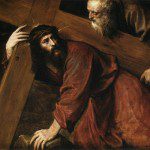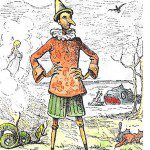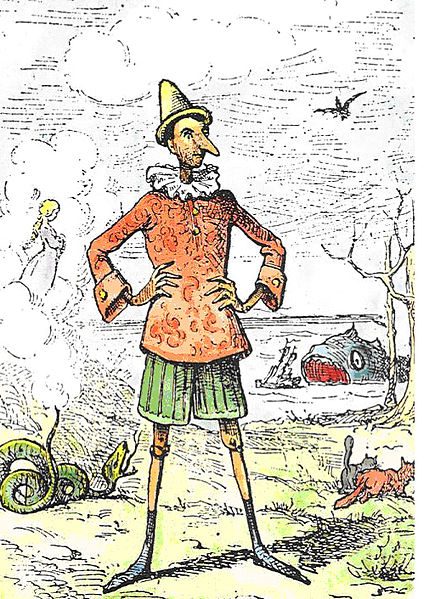
Last night, Mike Parker (aka Peter Pan) and Robert Boylan (aka Roibeárd Ó Baíoláin, the proprietor of the impressive Scriptural Mormonism blog) recorded a genial ninety-minute conversation about the Heartland movement (regarding Book of Mormon geography), the origins and approach of Mr. Pan’s Neville-Neville Land blog, and l’affaire Richard Nygren (aka le scandale du siècle). I commend the archived video to the attention of any folks out there who might be interested in those subjects or in the people involved in them:
“Episode 35: Discussing Neville-Neville Land with Mike Parker”
I also note two new entries that have appeared on Neville-Neville Land blog since last I mentioned it: “An open reply to Jonathan Neville, part 2,” and “The story of Neville-Neville Land, as told to Robert Boylan.”
***
Here are some notes from a project on which I work for a few minutes every year or so, regarding the resurrection of Christ:
Helmut Koester writes that the appearances of Jesus “cannot very well be questioned.”[1] “We can say with complete certainty,” writes the agnostic New Testament scholar Bart Ehrman, “that some of his disciples at some later time insisted that he soon appeared to them. . . . Historians, of course, have no difficulty whatsoever speaking about the belief in Jesus’ resurrection, since it is a matter of public record.”[2] [“At some later time”? Early.] Traugott Holtz declares that the disciples’ “experience of resurrection . . . is in fact an undeniable historical event.”[3]
Critics who, by and large, accept the notion that the disciples genuinely had experiences of a living Jesus after his crucifixion and death can move in basically two directions. They might point out that events such as the resurrection simply don’t occur, or that life after death is an incoherent concept. Or they might say that we simply don’t, or can’t, know what happened.
What we know, says Fuller, “requires that the historian postulate some other event” besides the disciples’ faith in order to explain the sequel. We must identify the cause of the Easter faith . . . outside of their belief.”[4]
There are a number of alternative, naturalistic explanations for the resurrection. Raymond E. Brown terms them “gratuitous charges,” which suggests the seriousness with which most serious scholars have taken them.[5] As James Dunn says, “alternative interpretations of the data fail to provide a more satisfactory explanation” than does the claim of resurrection.[6] The Claremont philosopher Stephen Davis writes “All of the alternative hypotheses with which I am familiar are historically weak; some are so weak that they collapse of their own weight once spelled out. . . . The alternative theories that have been proposed are not only weaker but far weaker at explaining the available historical evidence.”[7] J. A. T. Robinson declares that “it is indeed very difficult to dismiss [Jesus’ postmortal appearances] and still find a credible explanation.”[8]
[1] Helmut Koester, History and Literature, 84.
[2] Bart Ehrman, Jesus: Apocalyptic Prophet of the New Millennium (New York: Oxford University Press, 1999), 230-231.
[3] Traugott Holtz, “Kenntnis von Jesus und Kenntnis Jesu,” Theologische Literaturzeitung 104 (1979): 10.
[4] Fuller, The Formation of the Resurrection Narratives, 169, 181.
[5] Brown, An Introduction to New Testament Christology, 163. See 163-167.
[6] Dunn, The Evidence for Jesus, 76. Compare N. T. Wright, “Christian Origins and the Resurrection of Jesus: The Resurrection of Jesus as a Historical Problem,” Sewanee Theological Review 41 (1998): 118-122.
[7] Stephen T. Davis, “Is Belief in the Resurrection Rational?” Philo 2 (1999): 57-58.
[8] J. A. T. Robinson, Can We Trust the New Testament? (Grand Rapids, MI: Eerdmans, 1977), 124.
[These notes are drawn from a very good 2004 essay by Gary Habermas titled “The Case for Christ’s Resurrection.”]
I continue, too, with my reading of Andrew Loke, Investigating the Resurrection of Jesus Christ: A New Transdisciplinary Approach (Routledge, 2020). Dr. Loke, a native of Singapore who is currently an Associate Professor at Hong Kong Baptist University, was a practicing physician before he returned to school first in the United States and then in the United Kingdom, where he earned a doctorate in philosophy and theology at King’s College London.
Here is an interesting chain of logic from his sixth chapter (“What happened to Jesus’ physical body?”) that I find clarifying and, therefore, useful. Please note that the word or is taken in the exclusive sense of “either one or the other, but not both”:
(7) Either (7.1), (7.2), or (7.3) is true:
(7.1) Jesus was not crucified (escape hypothesis)
(7.2) Jesus was crucified and he was not buried (unburied hypothesis).
(7.3) Jesus was crucified and he was buried, in which case either (8.1) or (8.2) is true”
(8.1) The body of Jesus remained buried (remain buried hypothesis)
(8.2) The body of Jesus did not remain buried, in which case either (9.1) or (9.2) is true:
(9.1). The body was removed by non-agent(s), e.g. earthquakes (Allison 2005a, p. 204), animals, etc. (removal by non-agent hypothesis)
(9.2) The body was removed by agent(s), in which case either (9.2.1) or (9.2.2) is true:
(9.2.1) Others removed the body, either
(9.2.1.1) Friends of Jesus (removal by friends hypothesis),
(9.2.1.2) Enemies of Jesus (removal by enemies hypothesis), or
(9.2.1.3) Neither friends nor enemies, e.g. tomb robbers (removal by neutral party hypothesis).
(9.2.2) Jesus himself removed his body, in which case either (9.2.2.1) or (9.2.2.2) is true:
(9.2.2.1) Jesus did not die on the cross: he swooned on the cross and exited the tomb later (swoon hypothesis), or
(9.2.2.2). Jesus died on the cross, rose from the dead, and exited the tomb (resurrection).
Apropos of (9.2.1.1) and in the spirit of it-isn’t-actually-quite-Easter-yet, I share with you a link to which Bruce Webster called my attention a day or two ago. It’s from the Babylon Bee (“Fake News You Can Trust”): “If Jesus’ Resurrection Were A Hoax”
Full disclosure: Dr. Loke argues, not only following the passage cited above but throughout his book, for (9.2.2.2): “Jesus died on the cross, rose from the dead, and exited the tomb (resurrection).”
***
Last night, we gathered with a substantial sample of the extended family for dinner at a Chinese restaurant. The princess, who was (of course) wearing the unicorn headband that had displaced her bunny ears headband earlier in the week, was impressed by all of the “relatives,” albeit that she was a little bit fuzzy as to who they all were and as to what, exactly, the word relatives means.
Alas, though, we bade farewell to both the princess and her father very early this morning at the Salt Lake City International Airport.
Farewells are hard; our house seems empty now. But — in a fitting message for Easter weekend — life goes on. It simply goes on elsewhere. The princess was really excited to try a “Chicago pizza,” and we now have photographic evidence that she has, in fact, done so. And that was followed by FaceTime confirmation of the fact.
.















